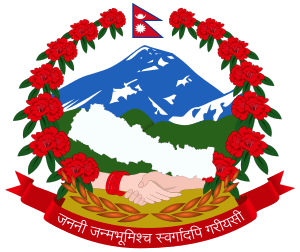Kingdom of Nepal
Hindu Kingdom of Nepal
| |||||||||||||||
|---|---|---|---|---|---|---|---|---|---|---|---|---|---|---|---|
| 1768–2008 | |||||||||||||||
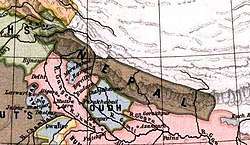 Territory of the Kingdom of Nepal in 1808 | |||||||||||||||
 Territory of the Kingdom of Nepal in 2008 | |||||||||||||||
| Status | |||||||||||||||
| Capital | Kathmandu | ||||||||||||||
| Common languages | Nepali (Gorkhali) | ||||||||||||||
| Religion | Hinduism | ||||||||||||||
| Government |
| ||||||||||||||
| Mahārājādhirāja | |||||||||||||||
• 1768–1775 | Prithvi Narayan Shah Dev (first) | ||||||||||||||
• 2001–2008 (presently as a titular reign) | Gyanendra Bir Bikram Shah Dev (last) | ||||||||||||||
| Prime Minister | |||||||||||||||
• 1799–1804 | Damodar Pande (first) | ||||||||||||||
• 2006–2008 | Girija Prasad Koirala (last) | ||||||||||||||
| Legislature |
| ||||||||||||||
| History | |||||||||||||||
• Unification under Prithvi Narayan Shah | 25 September 1768 | ||||||||||||||
| 1806–1837 and 1843–1845 | |||||||||||||||
| 1846–1953 | |||||||||||||||
| 1990–2007 | |||||||||||||||
• Republic | 28 May 2008 | ||||||||||||||
| Currency |
| ||||||||||||||
| Calling code | 977 | ||||||||||||||
| ISO 3166 code | NP | ||||||||||||||
| |||||||||||||||
| Today part of |
| ||||||||||||||
The Kingdom of Nepal (Nepali: नेपाल अधिराज्य), also known as the Kingdom of Gorkha (Nepali: गोर्खा अधिराज्य), was a Hindu kingdom on the Indian subcontinent, formed in 1768,[4] by the unification of Nepal. Founded by King Prithvi Narayan Shah, a Gorkhali monarch of Rajput origin,[5] it existed for 240 years until the abolition of the Nepalese monarchy in 2008. During this period, Nepal was formally under the rule of the Shah dynasty, which exercised varying degrees of power during the kingdom's existence.
After the invasion of Tibet and plundering of Digarcha by Nepali forces under Prince Regent Bahadur Shah in 1792, the Dalai Lama and Chinese Ambans reported to Chinese administration for military support. The Chinese and Tibetan forces under Fu Kang An attacked Nepal but went for negotiation after failure at Nuwakot.[3] During the early-nineteenth century, however, the expansion of the East India Company's rule in India led to the Anglo-Nepalese War (1814–1816), which resulted in Nepal's defeat. Under the Sugauli Treaty, the kingdom retained its independence, but in exchange for territorial concessions making Mechi River to Mahakali River its boundary under Nepalese rule,[2] sometimes known as "Greater Nepal". Forces sent by Jung Bahadur Rana defeated the Tibetan forces on 1855 to force the Tibetan side to sign treaty favouring Nepal.[3] Political instability following the war resulted in the ascendancy of the Rana dynasty of Khas Chhetri Rajput origin, which made the office of Prime Ministers of Nepal hereditary in their family for the next century, from 1843 to 1951. Beginning with Jung Bahadur, the first Rana ruler, the Rana dynasty reduced the Shah monarch to a figurehead role. Rana rule was marked by tyranny, debauchery, economic exploitation and religious persecution.[6][7]
In July 1950, the newly independent republic of India signed a friendship treaty in which both nations agreed to respect the other's sovereignty. In November of the same year, India played an important role in supporting King Tribhuhvan, whom the Rana leader Mohan Shumsher Jang Bahadur Rana had attempted to depose and replace with his infant grandson King Gyanendra. With Indian support for a new government consisting largely of the Nepali Congress, King Tribhuvan ended the rule of the Rana dynasty in 1951.
Unsuccessful attempts were made to implement reforms and a constitution during the 1960s and 1970s. An economic crisis at the end of the 1980s led to a popular movement which brought about parliamentary elections and the adoption of a constitutional monarchy in 1990. The 1990s saw the beginning of the Nepalese Civil War (1996–2006), a conflict between government forces and the insurgent forces of the Communist Party of Nepal (Maoist). The situation for the Nepalese monarchy was further destabilised by the 2001 Nepalese royal massacre, in which Crown Prince Dipendra reportedly shot and killed ten people, including his father King Birendra, and was himself mortally wounded by what was allegedly a self-inflicted gunshot.
As a result of the massacre, King Gyanendra returned to the throne. His imposition of direct rule in 2005 provoked a protest movement unifying the Maoist insurgency and pro-democracy activists. He was eventually forced to restore Nepal's House of Representatives, which in 2007 adopted an interim constitution greatly restricting the powers of the Nepalese monarchy. Following an election held the next year, the Nepalese Constituent Assembly formally abolished the kingdom in its first session on 28 May 2008, declaring the Federal Democratic Republic of Nepal in its place.
Until the abolition of the monarchy, Nepal was the world's only country to have Hinduism as its state religion; the country is now formally a secular state.[8][9]
18th century
Expansion
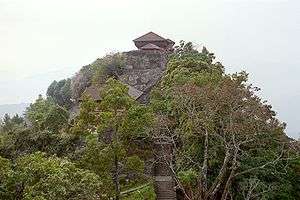
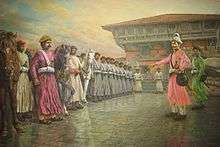
After decades of rivalry between the medieval kingdoms, the Kingdom of Nepal was re-unified in the latter half of the 18th century, when Prithvi Narayan Shah, the ruler of the small principality of Gorkha, formed a unified country from a number of independent hill states. Prithvi Narayan Shah dedicated himself at an early age to the conquest of the Kathmandu Valley and the creation of a single state, which he achieved in 1768.
Origins
.jpg)
The country was frequently called the Gorkha Kingdom.[10] The Parbate Brahmins and the ruling dynasty among the Gorkhali people trace their ancestry to the Hindu Rajputs and Brahmins of Northern India who entered modern Nepal from the West following Muslim advances. The actual historical process however by which this migration took place and the history of the Gorkhalis' ultimate conquest of Nepal span a couple of centuries and are drastically different from what Chauhan proposes. More importantly, Chauhan's overall thesis claiming the existence of a Gurkha identity way before the Shahs came to the Nepali hills is not supported by historical evidence available in Nepal. In Nepal the warrior people are not referred to as 'Gurkhas', they are called 'Gorkhalis', meaning the 'inhabitants of Gorkha.' Their famed battle cry is 'Ayo Gorkhali', meaning 'the Gorkhali has come.'
The etymology of the geographical name 'Gorkha' is indeed related to the Hindu mendicant-saint Gorakhnath. In the village of Gorkha is situated a temple dedicated to Gorakhnath as well as another dedicated to Gorakhkali, a corresponding female deity. The Nepali geographical encyclopedia 'Mechi-dekhi Mahakali' ('From Mechi to Mahakali') published in 2013 Bikram Era (1974-75 AD) by the authoritarian Panchayat government to mark the coronation of King Birendra Shah agrees with the association of the name of the place with the saint but does not add any further detail.[11] The facts regarding when the temples were built and the place named after the saint are lost in the sweeping winds of time. We may guess that these developments took place in the early part of the second millennium of the Common Era following the rise of the Nath sect. In fact, the pilgrimage circuit of the sect across the northern Indian sub-continent also spans a major part of present-day Nepal including Kathmandu Valley. The Newars of Medieval Nepal have a couple of important temples and festivals dedicated to the major Nath teachers. Immediately before the rule of Gorkha by the Shahs, Gorkha was inhabited by both Aryan and Mongoloid ethnic groups and ruled by the Khadkas, who were probably of Khas origin. Dravya Shah defeated the Khadkas in 1559 AD and commenced Shah rule over the principality.[11] Prithvi Narayan Shah belonged to the ninth generation of the Shahs in Gorkha. He took the reins of power in 1742 AD.[12]
Tibetan conflict
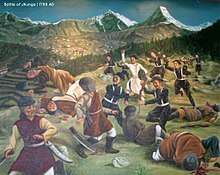
After the death of Prithvi Narayan Shah, the Shah dynasty began to expand their kingdom into what is present day North India. Between 1788 and 1791, Nepal invaded Tibet and robbed Tashi Lhunpo Monastery of Shigatse. Tibet sought Chinese help and the Qianlong Emperor of the Chinese Qing Dynasty appointed Fuk'anggan commander-in-chief of the Tibetan campaign. Heavy damages were inflicted on both sides. The Nepali forces retreated step by step back to Nuwakot to stretch Sino-Tibetan forces uncomfortably. Chinese launched uphill attack during the daylight and failed to succeed due to strong counterattack with Khukuri at Nuwakot.[3] The Chinese army suffered a major setback when they tried to cross a monsoon-flooded Betrawati, close to the Gorkhali palace in Nuwakot.[13] A stalemate ensued when Fuk'anggan was keen to protect his troops and wanted to negotiate at Nuwakot. The treaty was favouring more to Chinese side where Nepal had to send tributes to the Chinese emperor.[3]
19th century
Thapa dynasty
.jpg)
Thapas, who were Khas Kshatriya, rose to power when the King of Nepal Rana Bahadur Shah was cut down by his half brother Sher Bahadur Shah on the year 1806.[14] Bhimsen Thapa (1775-1839), the leading Thapa Kaji, taking opportunity of the occasion massacred nearly 55 military and civil officers and catapulting Thapas into the power.[14] He took the title of Mukhtiyar succeeding King Rana Bahadur as Chief Authority and his niece Queen Tripurasundari of Nepal as Queen Regent of junior King Girvan Yuddha Bikram Shah.[15]
Anglo-Gurkha War
Rivalry between Nepal and the East India Company—over the princely states bordering Nepal and India—eventually led to the Anglo-Nepalese War (1814–16), in which Nepal was defeated. The Treaty of Sugauli was signed in 1816, ceding large parts of the Nepali territories of Terrai and Sikkim, (nearly one third of the country), to the British, in exchange for Nepalese autonomy. As the territories were not restored to Nepal by the British when freedom was granted to the people of British India, these have become a part of the Republic of India, although the people of Sikkim decided in a public referendum in 1975 to merge the kingdom in India and become a state in the Republic of India. After losing the land, the East India Company decided to give some of territories back to Nepal.
Rana dynasty rule
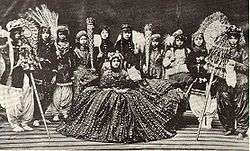
Factionalism among the royal family led to a period of instability after the war. In 1846, Queen Rajendralakshmi plotted to overthrow Jang Bahadur, a fast-rising military leader of Indian Rajput ancestry who was presenting a threat to her power. The plot was uncovered and the queen had several hundred princes and chieftains executed after an armed clash between military personnel and administrators loyal to the queen. This came to be known as the Kot Massacre. However, Bahadur emerged victorious eventually and founded the Rana dynasty; the monarch was made a titular figure, and the post of Prime Minister was made powerful and hereditary, held by a Ranas.
Third Nepalese Tibet War
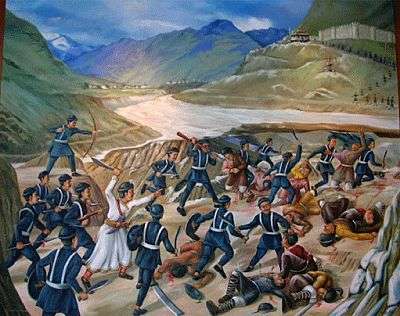
Jung Bahadur Rana sent forces under his brothers Bam Bahadur Kunwar Rana and Dhir Shamsher Rana to attack Tibet again to achieve complete victory. His forces succeeded on defeating Tibetan forces on two sides. The Tibetan team arrived on January 1856 to sign treaty. After a month, Treaty of Thapathali was signed which was more favourable to Nepal.[3]
20th century
Nepal and the British
The Rana regime, a tightly centralized autocracy, pursued a policy of isolating Nepal from external influences. This policy helped Nepal maintain its national independence during the British colonial era, but it also impeded the country's economic development and modernisation. The Ranas were staunchly pro-British and assisted the British during the Indian Rebellion of 1857 and later in both World Wars. At the same time, although Chinese claims, the British supported Nepalese independence at the beginning of the twentieth century.[16]
In December 1923, Britain and Nepal formally signed a "treaty of perpetual peace and friendship" superseding the Sugauli Treaty of 1816 and upgrading the British resident in Kathmandu to an envoy. Slavery was abolished in Nepal in 1924.[17]
Democratic reform
Popular dissatisfaction against the family rule of the Ranas had started emerging from among the few educated people, who had studied in various Indian schools and colleges, and also from within the Ranas, many of whom were marginalised within the ruling Rana hierarchy. Many of these Nepalese in exile had actively taken part in the Indian Independence struggle and wanted to liberate Nepal as well from the internal autocratic Rana occupation. The political parties such as The Prajaparishad and Nepali Congress were already formed in exile by leaders such as B.P. Koirala, Ganesh Man Singh, Subarna Sumsher Rana, Krishna Prasad Bhattarai, Girija Prasad Koirala and many other patriotic-minded Nepalis who urged the military and popular political movement in Nepal to overthrow the autocratic Rana Regime. Among the prominent martyrs to die for the cause, executed at the hands of the Ranas, were Dharma Bhakta Mathema, Shukraraj Shastri, Gangalal Shrestha and Dasharath Chand. This turmoil culminated in King Tribhuvan, a direct descendant of Prithvi Narayan Shah, fleeing from his "palace prison" in 1950, to newly independent India, touching off an armed revolt against the Rana administration. This eventually ended in the return of the Shah family to power and the appointment of a non-Rana as prime minister. A period of quasi-constitutional rule followed, during which the monarch, assisted by the leaders of fledgling political parties, governed the country. During the 1950s, efforts were made to frame a constitution for Nepal that would establish a representative form of government, based on a British model.
In early 1959, Tribhuvan's son King Mahendra issued a new constitution, and the first democratic elections for a national assembly were held. The Nepali Congress Party, a moderate socialist group, gained a substantial victory in the election. Its leader, Bishweshwar Prasad Koirala, formed a government and served as prime minister. After years of power wrangling between the kings (Tribhuvan and Mahendra) and the government, Mahendra dissolved the democratic experiment in 1960.
King Mahendra's new constitution
Declaring the contemporary parliament a failure, King Mahendra in 1960 dismissed the Koirala government, declared that a "partyless" panchayat system would govern Nepal, and promulgated another new constitution on 16 December 1962.
Subsequently, the Prime Minister, Members of Parliament and hundreds of democratic activists were arrested. In fact, this trend of arrest of political activists and democratic supporters continued for the entire 30-year period of partyless Panchayati System under King Mahendra and then his son, King Birendra.
The new constitution established a "partyless" system of panchayats (councils) which King Mahendra considered to be a democratic form of government, closer to Nepalese traditions. As a pyramidal structure, progressing from village assemblies to a Rastriya Panchayat (National Parliament), the panchayat system constitutionalised the absolute power of the monarchy and kept the King as head of state with sole authority over all governmental institutions, including the Cabinet (Council of Ministers) and the Parliament. One-state-one-language became the national policy, and all other languages suffered at the cost of the official language, "Nepali", which was the king's language.
King Mahendra was succeeded by his 27-year-old son, King Birendra, in 1972. Amid student demonstrations and anti-regime activities in 1979, King Birendra called for a national referendum to decide on the nature of Nepal's government: either the continuation of the panchayat system with democratic reforms or the establishment of a multiparty system. The referendum was held in May 1980, and the panchayat system won a narrow victory. The king carried out the promised reforms, including selection of the prime minister by the Rastriya Panchayat.
End of Panchayat system
There was resentment against the authoritarian regime and the curbs on the freedom of the political parties. There was widespread feeling of the Palace being non-representative of the masses, especially when the Marich Man Singh government faced political scandals on charges of misappropriation of funds allotted for the victims of the earthquake in August 1991 or when it reshuffled the Cabinet instead of investigating the deaths of the people in a stampede in the national sports complex in a hailstorm. Also the souring of the India-Nepal trade relations affected the popularity of the Singh government.
In April 1987, Nepal had introduced the work permit for Indian workers in three of its districts, and in early 1989, Nepal provided 40% duty concession to Chinese goods and later withdrew duty concessions from Indian goods in such a manner that the Chinese goods became cheaper than the Indian goods. This led to the souring of relations which were already strained over the purchase of Chinese arms by Nepal in 1988. India refused to renew two separate Treaties of Trade and Transit and insisted on a single treaty dealing with the two issues, which was not acceptable to Nepal. A deadlock ensued and the Treaties of Trade and Transit expired on 23 March 1989. The brunt of the closure of the trade and transit points was mainly faced by the lower classes in Nepal due to the restricted supply of consumer goods and petroleum products such as petrol, aviation fuel and kerosene. The industries suffered because of their dependence on India for resources, trade and transit. The Government of Nepal tried to deal with the situation by depending on foreign aid from the US, UK, Australia and China. However, the government's strategy to manage the crisis could not satisfy those people who desired negotiations with India rather than dependence on foreign aid as a solution.
Taking advantage of the uneasiness amongst some people against the government and the strained India-Nepal relations, the Nepali Congress (NC) and the left-wing parties blamed the government for perpetuating the crisis and not taking any serious measures to solve it. In December 1989, the NC tried to utilize B.P. Koirala's anniversary by launching a people's awareness program. The left-wing alliance known as the United Left Front (ULF) extended its support to the NC in its campaign for a party system. On 18–19 January 1990, the NC held a conference in which leaders from various countries and members of the foreign Press were invited. Leaders from India attended the conference; Germany, Japan, Spain, Finland supported the movement; and the Embassies of the USA and West Germany were present on the occasion. Inspired by the international support and the democratic movements occurring throughout the world after the disintegration of the Soviet Union in 1989, the NC and the ULF launched a mass movement on 18 February to end the Panchayat regime, and the installation of an interim government represented by various parties and people.
On 6 April the Marich Man Singh government was dismissed and Lokendra Bahadur Chand became the Prime Minister on the same day. However, the agitating mob was not satisfied with the change of government as they were not against the Singh government per se but against the party-less system. On 16 April the Chand government was also dismissed and a Royal Proclamation was issued the next day which dissolved the National Panchayat, the Panchayat policy and the evaluation committee and the class organizations. Instead, the proclamation declared "functioning of the political parties" and maintained that "all political parties will always keep the national interest uppermost in organizing themselves according to their political ideology."
During this protest many civilians were killed: after the end of the Panchayat rule they were seen as 'undeclared martyrs'. One of those martyrs is Ram Chandra Hamal, member of the Nepali Congress and killed during his imprisonment.[18]
1990 People's Movement
People in rural areas had expected that their interests would be better represented after the adoption of parliamentary democracy in 1990. The Nepali Congress with support of "Alliance of leftist parties" decided to launch a decisive agitational movement, Jana Andolan, which forced the monarchy to accept constitutional reforms and to establish a multiparty parliament. In May 1991, Nepal held its first parliamentary elections in nearly 50 years. The Nepali Congress won 110 of the 205 seats and formed the first elected government in 32 years.
Civil strife
In 1992, in a situation of economic crisis and chaos, with spiralling prices as a result of implementation of changes in policy of the new Congress government, the radical left stepped up their political agitation. A Joint People's Agitation Committee was set up by the various groups.[19] A general strike was called for 6 April.
Violent incidents began to occur on the evening before of the strike. The Joint People's Agitation Committee had called for a 30-minute 'lights out' in the capital, and violence erupted outside Bir Hospital when activists tried to enforce the 'lights out'. At dawn on 6 April, clashes between strike activists and police, outside a police station in Pulchok (Patan), left two activists dead.
Later in the day, a mass rally of the Agitation Committee at Tundikhel in the capital Kathmandu was attacked by police forces. As a result, riots broke out and the Nepal Telecommunications building was set on fire; police opened fire at the crowd, killing several persons. The Human Rights Organisation of Nepal estimated that 14 persons, including several onlookers, had been killed in police firing.[20]
When promised land reforms failed to appear, people in some districts started to organize to enact their own land reform and to gain some power over their lives in the face of usurious landlords. However, this movement was repressed by the Nepali government, in Operation Romeo and Operation Kilo Sera II, which took the lives of many of the leading activists of the struggle. As a result, many witnesses to this repression became radicalised.
Nepalese Civil War
In February 1996, one of the Maoist parties started a bid to replace the parliamentary monarchy with a people's new democratic republic, through a Maoist revolutionary strategy known as the people's war, which led to the Nepalese Civil War. Led by Dr. Baburam Bhattarai and Pushpa Kamal Dahal (better known as "Prachanda"), the insurgency began in five districts in Nepal: Rolpa, Rukum, Jajarkot, Gorkha, and Sindhuli. The Maoists declared the existence of a provisional "people's government" at the district level in several locations.
21st century
Palace massacre
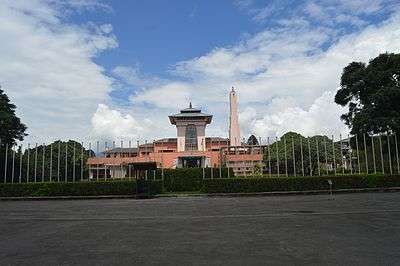
On 1 June 2001, Crown Prince Dipendra allegedly went on a shooting-spree, assassinating 9 members of the royal family, including King Birendra and Queen Aishwarya, before shooting himself. Due to his survival he temporarily became king before dying of his wounds, after which Prince Gyanendra (Birendra's brother) inherited the throne, according to tradition. The massacre shattered the aura of mythology that still surrounded the Royal Family, exposing their far too human intrigues.
Meanwhile, the Maoist rebellion escalated, and in October 2002 the king temporarily deposed the government and took complete control of it.[21] A week later he reappointed another government, but the country was still very unstable because of the civil war with the Maoists, the various clamouring political factions, the king's attempts to take more control of the government, and worries about the competence of Gyanendra's son and heir, Prince Paras.
Suspension of responsible government
In the face of unstable governments and a Maoist siege on the Kathmandu Valley in August 2004, popular support for the monarchy began to wane. On 1 February 2005, Gyanendra dismissed the entire government and took to exercising his executive powers without ministerial advice, declaring a "state of emergency" to quash the Maoist movement. Politicians were placed under house arrest, phone and internet lines were cut, and freedom of the press was severely curtailed.
2006 democracy movement in Nepal
The king's new regime made little progress in his stated aim of suppressing the insurgents. The European Union described the municipal elections of February 2006 as "a backward step for democracy", as the major parties boycotted the election and the army forced some candidates to run for office.[22] In April 2006 strikes and street protests in Kathmandu forced the king to reinstate the parliament. A seven-party coalition resumed control of the government and stripped the king of most of his powers. As of 15 January 2007 a unicameral legislature under an interim constitution governed Nepal.
Abolition of the monarchy
The Nepalese Constituent Assembly came to fruition on 24 December 2007 when it was announced that the monarchy would be abolished in 2008 after the Constituent Assembly elections;[23] and on 28 May 2008, Nepal was declared a Federal Democratic Republic.
Geography

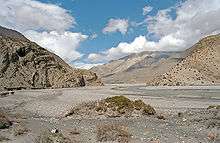
The Kingdom of Nepal was of roughly trapezoidal shape, 800 kilometres (500 mi) long and 200 kilometres (125 mi) wide, with an area of 147,181 square kilometres (56,827 sq mi). Nepal was commonly divided into three physiographic areas: the Mountain, Hill, and Terai Regions. These ecological belts run east-west and are bisected by Nepal's major river systems. Nepal is roughly the same size as the US state of Arkansas or the country of England.
The Madhesi Plains bordering India are part of the northern rim of the Indo-Gangetic plains. They were formed and are fed by three major rivers: the Kosi, the Narayani (India's Gandak River), and the Karnali. This region has a hot, humid climate.
The Hill Region (Pahad) abuts the mountains and varies from 1,000 to 4,000 metres (3,300–13,125 ft) in altitude. Two low mountain ranges, the Mahabharat Lekh and Shiwalik Range (also called the Churia Range) dominate the region. The hilly belt includes the Kathmandu Valley, the country's most fertile and urbanised area. Unlike the valleys Called Inner Tarai (Bhitri Tarai Uptyaka) elevations above 2,500 metres (8,200 ft) are sparsely populated.
The Mountain Region contains the highest region in the world. The world's highest mountain, Mount Everest (Sagarmatha in Nepali) at 8,850 metres (29,035 ft) is located on the border with China. Eight more of the world's ten highest mountains are located in Nepal: Lhotse, Makalu, Cho Oyu, Kanchenjunga, Dhaulagiri, Annapurna and Manaslu. Deforestation is a major problem in all regions, with resulting erosion and degradation of ecosystems.
Nepal has five climatic zones, broadly corresponding to altitude. The tropical and subtropical zones lie below 1,200 metres (3,940 ft), the temperate zone 1,200 to 2,400 metres (3,900–7,875 ft), the cold zone 2,400 to 3,600 metres (7,875–11,800 ft), the subarctic zone 3,600 to 4,400 metres (11,800–14,400 ft), and the Arctic zone above 4,400 metres (14,400 ft). Nepal experiences five seasons: summer, monsoon, autumn, winter and spring. The Himalaya blocks cold winds from Central Asia in winter, and forms the northern limit of the monsoon wind patterns.
Although Nepal shares no boundary with Bangladesh, the two countries are separated by a narrow strip of land about 21 kilometre (13 mi) wide, called the Chicken's Neck. Efforts are underway to make this area a free-trade zone.
Situated in the Great Himalayan Range in Northern part of Nepal, Mount Everest has the highest altitude of any mountain in the world. Technically, the south-east ridge on the Nepali side of the mountain is easier to climb, so most climbers travel to Everest through Nepal. The Annapurna mountain range also lies in Nepal.
Zones, districts, and regions
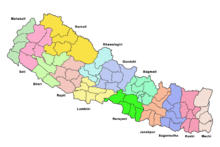
Nepal was divided into 14 zones and 75 districts, grouped into 5 development regions. Each district was headed by a fixed chief district officer responsible for maintaining law and order and coordinating the work of field agencies of the various government ministries. The 14 zones are:
Economy
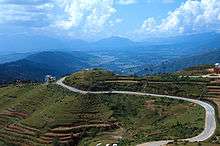
Agriculture sustains 76% of the population and accounts for about 39% of the GDP; services comprise 41%, and industry 22%. Nepal remains isolated from the world's major land, air and sea transport routes though air traffic is frequent. Hilly and mountainous terrain in the northern two-thirds of the country has made the building of roads and other infrastructure difficult and expensive. There were just over 8,500 km of paved roads, and one 59 km railway line in the south in 2003. There is only one reliable road route from India to the Kathmandu Valley. The only practical seaport of entry for goods bound for Kathmandu is Kolkata in India. Internally, the poor state of development of the road system (22 of 75 administrative districts lack road links) makes volume distribution unrealistic.
Aviation is in a better state, with 48 airports, ten of them with paved runways. There is less than one telephone per 19 people; landline telephone services are not adequate nationwide but concentrated in cities and district headquarters; mobile telephony is in a reasonable state in most parts of the country with increased accessibility and affordability. There were around 175,000 Internet connections in 2005, but after the imposition of the "state of emergency", intermittent losses of service were reported. Uninterrupted Internet connections have resumed after the brief period of confusion as Nepal's second major people's revolution took place to overthrow the King's absolute power.[24]
Its landlocked location and[25] technological backwardness and the long-running civil war have also prevented Nepal from fully developing its economy. The country receives foreign aid from India, Japan, the United Kingdom, the United States, the European Union, China, Switzerland, and Scandinavian countries. The government's budget is about US$1.153 billion, with expenditures of $1.789bn (FY05/06). The inflation rate has dropped to 2.9% after a period of higher inflation during the 1990s. The Nepali Rupee has been tied to the Indian Rupee at an exchange rate of 1.6 for many years. Since the loosening of exchange rate controls in the early 1990s, the black market for foreign exchange has all but disappeared. A long-standing economic agreement underpins a close relationship with India.
The distribution of wealth among the Nepali is consistent with that in many developed and developing countries: the highest 10% of households control 39.1% of the national wealth and the lowest 10% control only 2.6%.
Nepal's workforce of about 10 million suffers from a severe shortage of skilled labour. Agriculture employs 81% of the workforce, services 16% and manufacturing/craft-based industry 3%. Agricultural produce—mostly grown in the Terai region bordering India—includes rice, corn, wheat, sugarcane, root crops, milk, and water buffalo meat. Industry mainly involves the processing of agricultural produce, including jute, sugarcane, tobacco, and grain. The spectacular landscape and deep, exotic culture of Nepal represents considerable potential for tourism, but growth in this export industry has been stifled by recent political events. The rate of unemployment and underemployment approaches half of the working-age population. Thus many Nepali citizens move to India in search of work, the Gulf countries and Malaysia being new sources of work. Poverty is acute.[26] Nepal receives US$50 million a year through the Gurkha soldiers who serve in the Indian and British armies and are highly esteemed for their skill and bravery. The total remittance value is worth around 1 billion USD, including money sent from Persian Gulf and Malaysia, who combined employ around 700,000 Nepali citizens.
Nepal's GDP for the year 2005 is estimated at just over US$39 billion (adjusted to Purchasing Power Parity), making it the 83rd-largest economy in the world. Per-capita income is less than US$300. Nepal's exports of mainly carpets, clothing, leather goods, jute goods and grain total $822 million. Import commodities of mainly gold, machinery and equipment, petroleum products and fertilizer total US$2 bn. India (53.7%), the US (17.4%), and Germany (7.1%) are its main export partners. Nepal's import partners include India (47.5%), the United Arab Emirates (11.2%), China (10.7%), Saudi Arabia (4.9%), and Singapore (4%).[27]
Government and politics
Until 1990, Nepal was an absolute monarchy running under the executive control of the king. Faced with a people's movement against the absolute monarchy, King Birendra, in 1990, agreed to large-scale political reforms by creating a parliamentary monarchy with the king as the head of state and a prime minister as the head of the government.
Nepal's legislature was bicameral consisting of a House of Representatives and a National Council. The House of Representatives consists of 205 members directly elected by the people. The National Council had sixty members, ten nominated by the king, thirty-five elected by the House of Representatives and the remaining fifteen elected by an electoral college made up of chairs of villages and towns. The legislature had a five-year term, but was dissolvable by the king before its term could end. All Nepali citizens 18 years and older became eligible to vote.
The executive comprised the King and the Council of Ministers (the Cabinet). The leader of the coalition or party securing the maximum seats in an election was appointed as the Prime Minister. The Cabinet was appointed by the king on the recommendation of the Prime Minister. Governments in Nepal have tended to be highly unstable; no government has survived for more than two years since 1991, either through internal collapse or parliamentary dissolution by the monarch on the recommendation of prime minister according to the constitution.
The movement in April 2006 brought about a change in the nation. The autocratic King was forced to give up power. The dissolved House of Representatives was restored. The House of Representatives formed a government which had successful peace talks with the Maoist Rebels. An interim constitution was promulgated and an interim House of Representatives was formed with Maoist members. The number of seats were also increased to 330. The peace process in Nepal made a giant leap in April 2007, when the Communist Party of Nepal (Maoist) joined the interim government of Nepal. The peace process seems to be in jeopardy after Maoists decided to leave coalition government on 18 September 2007, demanding the declaration of a republic before the scheduled constituent assembly.
Kings and Prime Ministers of the Kingdom of Nepal
Kings of Nepal (1768–2008)
| Name | Lifespan | Reign start | Reign end | Notes | Family | Image |
|---|---|---|---|---|---|---|
Prithvi Narayan Shah
| 7 January 1723[28] – 11 January 1775 (aged 52) | 25 September 1768 | 11 January 1775 | Son of Nara Bhupal Shah | Shah | 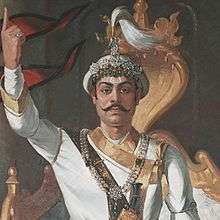 |
Pratap Singh Shah
| 16 April 1751 – 17 November 1777 (aged 26) | 11 January 1775 | 17 November 1777 | Son of Prithvi Narayan Shah | Shah | 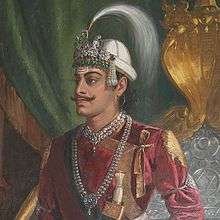 |
Rana Bahadur Shah
| 25 May 1775 – 25 April 1806 (aged 30) | 17 November 1777 | 8 March 1799 (abdicated) | Son of Pratap Singh Shah | Shah | 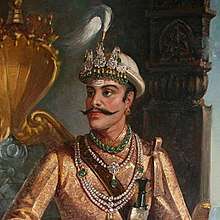 |
Girvan Yuddha Bikram Shah
| 19 October 1797 – 20 November 1816 (aged 19) | 8 March 1799 | 20 November 1816 | Son of Rana Bahadur Shah | Shah | 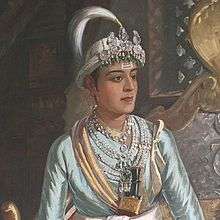 |
Rajendra Bikram Shah
| 3 December 1813 – 10 July 1881 (aged 67) | 20 November 1816 | 12 May 1847 (abdicated) | Son of Girvan Yuddha Bikram Shah | Shah | 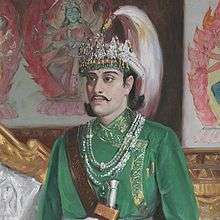 |
Surendra Bikram Shah
| 20 October 1829 – 17 May 1881 (aged 51) | 12 May 1847 | 17 May 1881 | Son of Rajendra Bikram Shah | Shah | 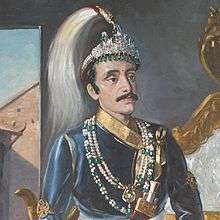 |
Prithvi Bir Bikram Shah
| 18 August 1875 – 11 December 1911 (aged 36) | 17 May 1881 | 11 December 1911 | Grandson of Surendra Bikram Shah | Shah | 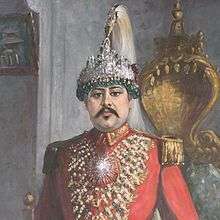 |
| Tribhuvan Bir Bikram Shah (1st reign)
| 30 June 1906 – 13 March 1955 (aged 48) | 11 December 1911 | 7 November 1950 (went into exile) | Son of Prithvi Bir Bikram Shah | Shah |  |
| Gyanendra Bir Bikram Shah (1st reign)
| 7 July 1947 | 7 November 1950 | 7 January 1951 (stepped down) | Grandson of Tribhuvan Bir Bikram Shah | Shah | 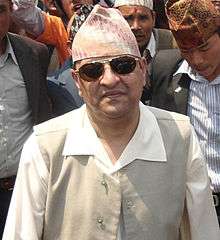 |
| Tribhuvan Bir Bikram Shah (2nd reign)
| 30 June 1906 – 13 March 1955 (aged 48) | 7 January 1951 | 13 March 1955 | Son of Prithvi Bir Bikram Shah | Shah |  |
Mahendra Bir Bikram Shah
| 11 June 1920 – 31 January 1972 (aged 51) | 14 March 1955 | 31 January 1972 | Son of Tribhuvan Bir Bikram Shah | Shah | 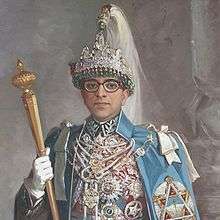 |
Birendra Bir Bikram Shah
| 28 December 1945 – 1 June 2001 (aged 55) | 31 January 1972 | 1 June 2001 (assassinated) | Son of Mahendra Bir Bikram Shah | Shah | 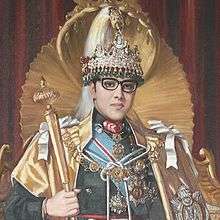 |
Dipendra Bir Bikram Shah[29]
| 27 June 1971 – 4 June 2001 (aged 29) | 1 June 2001 | 4 June 2001 ( brain Dead) | Son of Birendra Bir Bikram Shah | Shah | |
| Gyanendra Bir Bikram Shah (2nd reign)
| 7 July 1947 | 4 June 2001 | 28 May 2008 (deposed) | Son of Mahendra Bir Bikram Shah | Shah |  |
Prime Ministers during the Absolute monarchy (1799–1990)
Mul-Kajis during the Shah expansion era (1799–1806)
| No. | Portrait | Name (Birth–Death) |
Term of Office | Political Party | ||
|---|---|---|---|---|---|---|
| Took Office | Left Office | |||||
| 1 |  |
Damodar Pande (1752–1804) |
1799 | 1804 | Independent | |
Muktiyars during the Thapa/Pande era (1806–1846)
| No. | Portrait | Name (Birth–Death) |
Term of Office | Political Party | ||
|---|---|---|---|---|---|---|
| Took Office | Left Office | |||||
| — |  |
Rana Bahadur Shah (1775–1806) |
26 February 1806 | 26 April 1806 | Independent | |
| 2 | .jpg) |
Bhimsen Thapa (1775–1839) |
1806 | 1837 | Independent | |
| 3 | 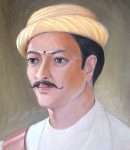 |
Rana Jang Pande (1789–1843) 1st time |
1837 | 1837 | Independent | |
| 4 |  |
Ranga Nath Poudyal (1773–?) 1st time |
1837 | 1838 | Independent | |
| 5 | 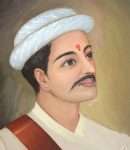 |
Chautariya Puskhar Shah (1784–1846) |
1838 | 1839 | Independent | |
| (3) |  |
Rana Jang Pande (1789–1843) 2nd time |
1839 | 1840 | Independent | |
| (4) |  |
Ranga Nath Poudyal (1773–?) 2nd time |
1840 | 1840 | Independent | |
| 6 |  |
Fateh Jung Shah (1805–1846) 1st time |
November 1840 | January 1843 | Independent | |
| 7 | 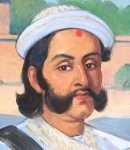 |
Mathabar Singh Thapa (1798–1845) |
28 November 1843 | 17 May 1845 | Independent | |
| (6) |  |
Fateh Jung Shah (1805–1846) 2nd time |
September 1845 | 14 September 1846 | Independent | |
Prime Ministers during the Rana era (1846–1951)
| No. | Portrait | Name (Birth–Death) |
Term of Office | Political Party | ||
|---|---|---|---|---|---|---|
| Took Office | Left Office | |||||
| 8 | 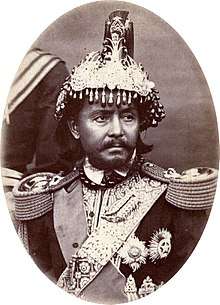 |
Jung Bahadur Rana (1816–1877) 1st time |
15 September 1846 | 1 August 1856 | Independent | |
| 9 | 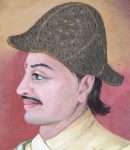 |
Bam Bahadur Kunwar (1818–1857) |
1 August 1856 | 25 May 1857 | Independent | |
| — |  |
Krishna Bahadur Kunwar Rana (1823–1863) Acting Prime Minister |
25 May 1857 | 28 June 1857 | Independent | |
| (8) |  |
Jung Bahadur Rana (1816–1877) 2nd time |
28 June 1857 | 25 February 1877 | Independent | |
| 10 |  |
Ranodip Singh Kunwar (1825–1885) |
27 February 1877 | 22 November 1885 | Independent | |
| 11 | Bir Shumsher Jang Bahadur Rana (1852–1901) |
22 November 1885 | 5 March 1901 | Independent | ||
| 12 |  |
Dev Shumsher Jang Bahadur Rana (1862–1914) |
5 March 1901 | 27 June 1901 | Independent | |
| 13 | 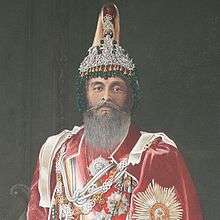 |
Chandra Shumsher Jang Bahadur Rana (1863–1929) |
27 June 1901 | 26 November 1929 | Independent | |
| 14 |  |
Bhim Shumsher Jung Bahadur Rana (1865–1932) |
26 November 1929 | 1 September 1932 | Independent | |
| 15 | 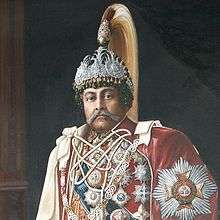 |
Juddha Shumsher Jang Bahadur Rana (1875–1952) |
1 September 1932 | 29 November 1945 | Independent | |
| 16 | Padma Shumsher Jang Bahadur Rana (1882–1961) |
29 November 1945 | 30 April 1948 | Independent | ||
| 17 | 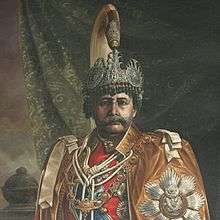 |
Mohan Shumsher Jang Bahadur Rana (1885–1967) |
30 April 1948 | 12 November 1951 | Independent | |
Prime Ministers during the Transition era (1951–1960)
| No. | Portrait | Name (Birth–Death) |
Term of Office | Political Party | ||
|---|---|---|---|---|---|---|
| Took Office | Left Office | |||||
| 18 | 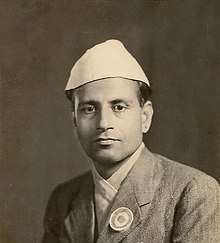 |
Matrika Prasad Koirala (1912–1997) 1st time |
16 November 1951 | 14 August 1952 | Nepali Congress | |
| — |  |
Direct rule by King Tribhuvan Bir Bikram Shah (1906–1955) |
14 August 1952 | 15 June 1953 | — | |
| (18) |  |
Matrika Prasad Koirala (1912–1997) 2nd time |
15 June 1953 | 14 April 1955 | Rastriya Praja Party | |
| — |  |
Direct rule by King Mahendra Bir Bikram Shah (1920–1972) |
14 April 1955 | 27 January 1956 | — | |
| 19 | .jpg) |
Tanka Prasad Acharya (1912–1992) |
27 January 1956 | 26 July 1957 | Nepal Praja Parishad | |
| 20 |  |
Kunwar Inderjit Singh (1906–1982) |
26 July 1957 | 15 May 1958 | United Democratic Party | |
| 21 | Subarna Shamsher Rana (1910–1977) |
15 May 1958 | 27 May 1959 | Nepali Congress | ||
| 22 | 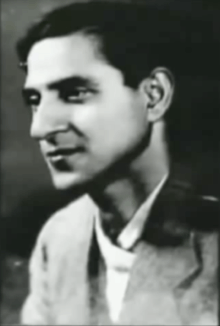 |
Bishweshwar Prasad Koirala (1914–1982) |
27 May 1959 | 26 December 1960 | Nepali Congress | |
Prime Ministers during the Panchayat era (1960–1990)
| No. | Portrait | Name (Birth–Death) |
Term of Office | Political Party | ||
|---|---|---|---|---|---|---|
| Took Office | Left Office | |||||
| — |  |
Direct rule by King Mahendra Bir Bikram Shah (1920–1972) |
26 December 1960 | 2 April 1963 | — | |
| 23 |  |
Tulsi Giri (1926–) 1st time |
2 April 1963 | 23 December 1963 | Independent | |
| 24 | Surya Bahadur Thapa (1928–2015) 1st time |
23 December 1963 | 26 February 1964 | Independent | ||
| (23) |  |
Tulsi Giri (1926–) 2nd time |
26 February 1964 | 26 January 1965 | Independent | |
| (24) | Surya Bahadur Thapa (1928–2015) 2nd time |
26 January 1965 | 7 April 1969 | Independent | ||
| 25 |  |
Kirti Nidhi Bista (1927–2017) 1st time |
7 April 1969 | 13 April 1970 | Independent | |
| — | Gehendra Bahadur Rajbhandari (1923–1994) Acting Prime Minister |
13 April 1970 | 14 April 1971 | Independent | ||
| (25) |  |
Kirti Nidhi Bista (1927–2017) 2nd time |
14 April 1971 | 16 July 1973 | Independent | |
| 26 |  |
Nagendra Prasad Rijal (1927–1994) 1st time |
16 July 1973 | 1 December 1975 | Independent | |
| (23) |  |
Tulsi Giri (1926–) 3rd time |
1 December 1975 | 12 September 1977 | Independent | |
| (25) |  |
Kirti Nidhi Bista (1927–2017) 3rd time |
12 September 1977 | 30 May 1979 | Independent | |
| (24) | Surya Bahadur Thapa (1928–2015) 3rd time |
30 May 1979 | 12 July 1983 | Independent | ||
| 27 |  |
Lokendra Bahadur Chand (1940–) 1st time |
12 July 1983 | 21 March 1986 | Independent | |
| (26) |  |
Nagendra Prasad Rijal (1927–1994) 2nd time |
21 March 1986 | 15 June 1986 | Independent | |
| 28 |  |
Marich Man Singh Shrestha (1942–2013) |
15 June 1986 | 6 April 1990 | Independent | |
| (27) |  |
Lokendra Bahadur Chand (1940–) 2nd time |
6 April 1990 | 19 April 1990 | Independent | |
Prime Ministers during the Constitutional monarchy (1990–2008)
| No. | Portrait | Name (Birth–Death) |
Term of Office | Political Party | |||
|---|---|---|---|---|---|---|---|
| Took Office | Left Office | Days | |||||
| 29 | 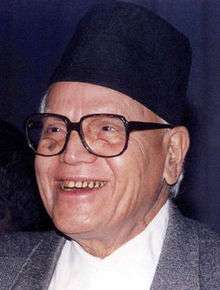 |
Krishna Prasad Bhattarai (1924–2011) 1st time |
19 April 1990 | 26 May 1991 | 402 | Nepali Congress | |
| 30 | .jpg) |
Girija Prasad Koirala (1925–2010) 1st time |
26 May 1991 | 30 November 1994 | 1284 | Nepali Congress | |
| 31 |  |
Man Mohan Adhikari (1920–1999) |
30 November 1994 | 12 September 1995 | 286 | Communist Party of Nepal (Unified Marxist–Leninist) | |
| 32 | 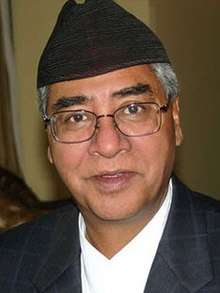 |
Sher Bahadur Deuba (1946–) 1st time |
12 September 1995 | 12 March 1997 | 547 | Nepali Congress | |
| (27) |  |
Lokendra Bahadur Chand (1940–) 3rd time |
12 March 1997 | 7 October 1997 | 209 | Rastriya Prajatantra Party (Chand) | |
| (24) | Surya Bahadur Thapa (1928–2015) 4th time |
7 October 1997 | 15 April 1998 | 190 | Rastriya Prajatantra Party | ||
| (30) | .jpg) |
Girija Prasad Koirala (1925–2010) 2nd time |
15 April 1998 | 31 May 1999 | 411 | Nepali Congress | |
| (29) |  |
Krishna Prasad Bhattarai (1924–2011) 2nd time |
31 May 1999 | 22 March 2000 | 296 | Nepali Congress | |
| (30) | .jpg) |
Girija Prasad Koirala (1925–2010) 3rd time |
22 March 2000 | 26 July 2001 | 491 | Nepali Congress | |
| (32) |  |
Sher Bahadur Deuba (1946–) 2nd time |
26 July 2001 | 4 October 2002 | 435 | Nepali Congress | |
| — |  |
Direct rule by King Gyanendra Bir Bikram Shah (1947–) |
4 October 2002 | 11 October 2002 | 7 | — | |
| (27) |  |
Lokendra Bahadur Chand (1940–) 4th time |
11 October 2002 | 5 June 2003 | 237 | Rastriya Prajatantra Party | |
| (24) | Surya Bahadur Thapa (1928–2015) 5th time |
5 June 2003 | 3 June 2004 | 364 | Rastriya Prajatantra Party | ||
| (32) |  |
Sher Bahadur Deuba (1946–) 3rd time |
3 June 2004 | 1 February 2005 | 243 | Nepali Congress (Democratic) | |
| — |  |
Direct rule by King Gyanendra Bir Bikram Shah (1947–) |
1 February 2005 | 25 April 2006 | 448 | — | |
| (30) | .jpg) |
Girija Prasad Koirala (1925–2010) 4th time |
25 April 2006 | 28 May 2008 | 764 | Nepali Congress | |
Military and foreign affairs
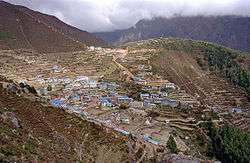
Nepal's military consists of the Nepalese Army which includes the Nepalese Army Air Service (the air force unit under it). The Nepalese Police Force is the civilian police and the Armed Police Force Nepal[30] is the paramilitary force. Service is voluntary and the minimum age for enlistment is 18 years. Nepal spends $99.2 million (2004) on its military—1.5% of its GDP. Most of the equipment and arms are supplied by India.
Nepal has close ties with both of its neighbours, India and China. In accordance with a long-standing treaty, Indian and Nepalese citizens may travel to each other's countries without a passport or visa. Nepalese citizens may work in India without legal restriction. Although Nepal and India typically have close ties, from time to time Nepal becomes caught up in the problematic Sino-Indian relationship. India considers Nepal as part of its realm of influence, and views Chinese aid with concern. Some Indians consider Nepal to be part of a greater pan-Indian state, an attitude that has caused Nepalese antagonism towards India. In 2005, after King Gyanendra took over, Nepalese relations with India, the US, and the UK worsened. These three foreign countries were vociferous opponents to the crackdown on civil liberties in Nepal.
Demographics
Nepal has a total population of 27,676,547 as of July 2005, with a growth rate of 2.2%. 39% of the population is up to 14 years old, 57.3% are aged between 15 and 64, and 3.7% above 65. The median age is 20.07 (19.91 for males and 20.24 for females). There are 1,060 males for every 1,000 females. Life expectancy is 59.8 years (60.9 for males and 59.5 for females). Total literacy rate is 53.74% (68.51% for males and 42.49% for females).
Groups are the Brahman-Hill 12.5%, Magar 7%, Tharu 6.6%, Tamang 5.5%, Newar 5.4%, Kami 3.9%, Yadav 3.9%, other 32.7%, Nepali White 2.8%. Nepali is the national language with 47.8% of the population speaking it as their first language. Other languages include Maithili 12.1%, Bhojpuri 7.4%, Tharu (Dagaura/Rana) 5.8%, Tamang 5.1%, Nepal Bhasa 3.6%, Magar 3.3%, Awadhi 2.4%, other 10%, unspecified 2.5%. Differences between Hindus and Buddhists have been in general very subtle and academic in nature due to the intermingling of Hindu and Buddhist beliefs. Both share common temples and worship common deities and many of Nepal's Hindus could also be regarded as Buddhists and vice versa.[31] Gurkhas are from Nepal. Buddhism was relatively more common among the Newar. Among the other natives of Nepal, those most influenced by Hinduism were the Magar, Sunwar, Limbu and Rai. Hindu influence is less prominent among the Gurung, Bhutia, and Thakali groups, who employ Buddhist monks for their religious ceremonies.[24][32]
The northern mountains are sparsely populated. A majority of the population live in the central highland despite the migration of a significant section of the population to the fertile Terai belt in recent years. Kathmandu, with a population of around 800,000 (Metropolitan area: 1,5 million) is the largest city in the country.
Culture
Nepalese culture is diverse and it reflects people of different ethnic origins. A typical Nepalese meal is dal-bhat, a kind of a lentil soup served with rice and vegetables. However, the Newar community has its own unique cuisine. It consists of non-vegetarian and vegetarian items as well as alcoholic and non-alcoholic beverages. Mustard oil and a host of spices, such as cumin, sesame seeds, turmeric, garlic, ginger, methi (fenugreek), bay leaves, cloves, cinnamon, pepper, chili, mustard seeds, vinegar, etc. are used in cooking. The cuisine served in the festivals is considered as the best diet cuisine.
Folklore is an integral part of Nepalese society. Traditional stories are rooted in the reality of day-to-day life—tales of love, affection, battles, and demons and ghosts; they reflect and explain local lifestyles, cultures and belief systems. Many Nepalese folktales are enacted in dance and music. The Newar community is very rich in cultural diversity. Most of the festivals observed in the Kthmandu valley are in the Newar community. The Newars are also well known for their music and dance. The Newar Music consists mainly of percussion instruments. Wind instruments such as flutes and similar instruments are also used. String instruments are very rare. There are songs pertaining to particular seasons and festivals. Paahan chare music is most probably the fastest played music whereas the Dapa the slowest. The dhimay music are the loudest ones. There are certain musical instruments such as Dhimay and Bhusya which are played as instrumental only and are not accompanied with songs. The Newar Dance can be broadly classified as masked dance and dance without the use of masks. The most representative of Newari dance is Lakhey dance. Almost all the settlements of Newar have Lakhey dance at least once a year. Almost all of these Lakhey dances are held in the Goonlaa month. So, they are called Goonlaa Lakhey. However, the most famous Lakhey dance is the Majipa Lakhey dance. It is performed by the Ranjitkars of Kathmandu. The dance takes place for a week during the week containing the full moon of Yenlaa month. The Lakhey are considered as the saviors of children. Likewise, in hills people enjoy their own kind of music, playing saarangi (string instrument), madal and flute. They also have many popular folk songs like lok geet and lok dohari.
The Nepali year begins in mid-April and is divided into 12 months. Saturday is the official weekly holiday. Main holidays include the National Day (birthday of the king) 28 December, Prithvi Jayanti, (11 January), and Martyr's Day (18 February) and a mix of Hindu and Buddhist festivals such as dashai in autumn, and tihar late autumn. During tihar, the Newar community celebrates its New Year as per local calendar (Nepal Sambat).
Most houses in rural Nepal are made up of a tight bamboo framework with mud and cow-dung walls. These dwellings remain cool in summers and retain warmth in winters. Dwellings in higher latitudes are mostly timber based.
References
- ↑ History of Kingdom of Nepal
- 1 2 "History of Nepal: A Sovereign Kingdom". Official website of Nepal Army.
- 1 2 3 4 5 6 "Nepal and Tibetan conflict". Official website of Nepal Army.
- ↑ Royal Ark
- ↑ Karl J. Schmidt (20 May 2015). An Atlas and Survey of South Asian History. Routledge. pp. 138–. ISBN 978-1-317-47681-8.
- ↑ Dietrich, Angela (1996). "Buddhist Monks and Rana Rulers: A History of Persecution". Buddhist Himalaya: A Journal of Nagarjuna Institute of Exact Methods. Retrieved 17 September 2013.
- ↑ Lal, C. K. (16 February 2001). "The Rana resonance". Nepali Times. Retrieved 17 September 2013.
- ↑ Why Monarchy is necessary in Nepal?
- ↑ George Conger (18 January 2008). "Nepal moves to become a secular republic". Religious Intelligence. Archived from the original on 2009-01-30.
- ↑ Whelpton, John (2005). A History of Nepal. Cambridge University Press. ISBN 0-521-80470-1.
- 1 2 'Mechi-dekhi Mahakali, Vol. 3, Paschimanchal Bikas Kshetra' p. 70
- ↑ Sharma, Devi Prasad, 'Adhunik Nepal-ko Itihas (1742-1961 AD).' Ratna Pustak Bhandar. Kathmandu. 1995.
- ↑ Stiller, L.F., "The Rise of the House of Gorkha." Patna Jesuit Society. Patna. 1975.
- 1 2 Pradhan, Kumar L. (2012). Thapa Politics in Nepal: With Special Reference to Bhim Sen Thapa, 1806–1839. New Delhi: Concept Publishing Company. p. 278. ISBN 9788180698132.
- ↑ Acharya, Baburam (2012), Acharya, Shri Krishna, ed., Janaral Bhimsen Thapa : Yinko Utthan Tatha Pattan (in Nepali), Kathmandu: Education Book House, p. 228, ISBN 9789937241748
- ↑ Matteo Miele (2017 (1)). "British Diplomatic Views on Nepal and the Final Stage of the Ch'ing Empire (1910–1911)" (PDF). Prague Papers on the History of International Relations: 90–101. Retrieved 2017-10-10. Check date values in:
|date=(help) - ↑ Tucci, Giuseppe. (1952). Journey to Mustang, 1952. Trans. by Diana Fussell. 1st Italian edition, 1953; 1st English edition, 1977. 2nd edition revised, 2003, p. 22. Bibliotheca Himalayica. ISBN 99933-0-378-X (South Asia); 974-524-024-9 (Outside of South Asia).
- ↑ "Nepal - The Panchayat System". countrystudies.us. Retrieved 2017-08-06.
- ↑ The organisers of the Committee were the Samyukta Janamorcha Nepal, the Communist Party of Nepal (Unity Centre), Communist Party of Nepal (Masal), the Nepal Communist League and the Communist Party of Nepal (Marxist-Leninist-Maoist).
- ↑ Hoftun, Martin, William Raeper and John Whelpton. People, politics and ideology: Democracy and Social Change in Nepal. Kathmandu: Mandala Book Point, 1999. p. 189
- ↑ Mahendra Lawoti and Anup K. Pahari, ed. (2012), The Maoist Insurgency in Nepal, Routledge, ISBN 9780415777179
- ↑ The Guardian
- ↑ "Nepalese monarchy to be abolished". BBC. 24 December 2007. Retrieved 25 December 2007.
- 1 2 "Nepal". CIA World Factbook. Retrieved 23 September 2005.
- ↑ "Nepal: Economy". MSN Encarta. p. 3. Archived from the original on 24 December 2005. Retrieved 23 September 2005.
- ↑ "Nepal". Factbook on Global Sexual Exploitation. Archived from the original on 30 December 2005. Retrieved 23 September 2005.
- ↑ CIA World Factbook
- ↑ Accordingly Royal Ark, he was born on 25 December 1722
- ↑ Reigned whilst in a coma, following the royal massacre
- ↑ Official Website of Armed Police Force Nepal Archived 10 July 2007 at the Wayback Machine.
- ↑ Library of Congress, Religion and Society
- ↑ "A Country Study: Nepal". Federal Research Division, Library of Congress. Retrieved 23 September 2005.
Further reading
| Wikimedia Commons has media related to History of Nepal. |
.svg.png)

